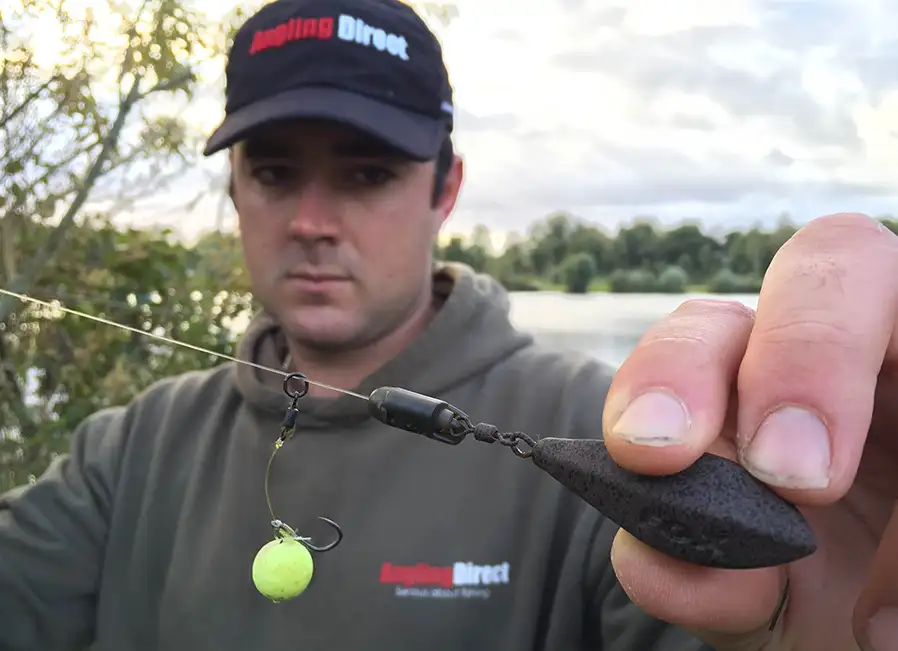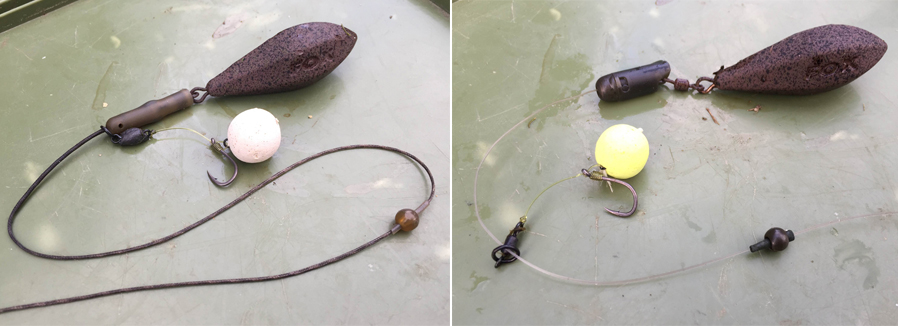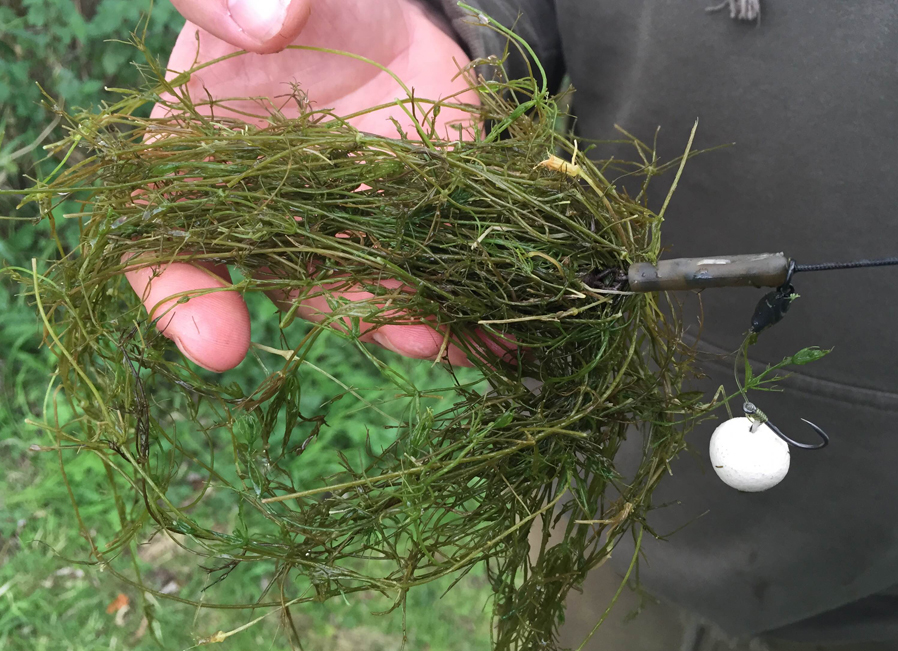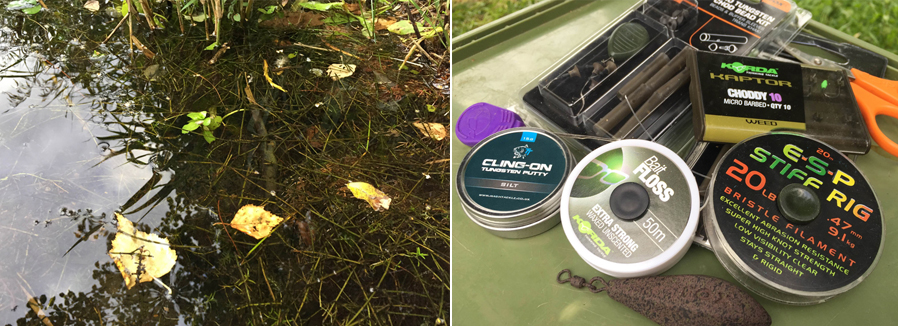This is a demo store. No orders will be fulfilled.
Your Guide to Chod Fishing & Chod Rigs

There’s no doubt that the chod rig has now firmly established its place in the armoury of the modern-day carp angler. A cast anywhere, fish anywhere rig, the chod gives carp anglers the ability to present a bait over any type of bottom.
What is a Chod Rig?
For anyone who doesn’t know, chod is the term given to leaf matter and debris on the bottom of the water. As you can imagine, when the leaves are falling from the trees during autumn and winter, the build-up of leaves and debris is at its highest.
When should you use a Chod Fishing Rig?
The chod is must more than just an autumn rig. Do not be so hasty to pack the rig away when the temperatures change as the chod can be used to great effect on any water where weed or deep silt can cause potential problems with presenting a bait.
What do I need to make a Chod Rig?
Beginner anglers will be happy to know that the chod is not a complicated rig. It’s based around a short, stiff section of fluorocarbon fished above your lead, helicopter style, baited with a pop-up. The hook length has the ability to slide up and down your mainline or leader and, thanks to the pop-up, settle above any debris on the bottom.
There are a few different varieties of chod rig but the two worth concentrating on are...
Standard Chod Rig: Normally fished in conjunction with leadcore. The standard chod rig is perfect for any fishing situation where the weed, silt or chod isn’t too bad. For example, if the lake you’re fishing is 6ft-8ft deep with weed growth of 2ft, your 3ft length of leadcore/leader would still present perfectly. Your bait could run up and down the 3ft length of leadcore and fish comfortably above any weed or debris.
Naked Chod: Fished directly onto your mainline.The naked chod is perfect for those slightly more difficult situations where the weed, silt or chod is very bad. For example, if the lake you’re fishing is 6ft-12ft deep with weed growth of 4ft-6ft, your 3ft length of leadcore/leader would be completely immersed in weed. By using the naked chod and no leadcore, your bait could run up as far as it needed to and fish comfortably above this.

TOP TIP: If you are using either chod rig it’s essential that you use a good quality pop-up on the hair. You need the pop-up bait to be super buoyant. You also need to balance the rig, this can be done using a small piece of putty on your hook link swivel, to ensure it sinks as slowly as possible.
How does the Chod Rig Work?
When you cast your chod rig out, your lead sinks to the depths and your hooklength flies back up your line/leader. Once the lead has hit the bottom, your baited rig then slowly sinks until it encounters the first piece of weed or chod, where it’ll then settle and start fishing.
TOP TIP: It is a good idea to use relatively slack lines whilst chod fishing, allowing the line to follow the contours of the bottom. This is key to getting your baited rig to settle as naturally as possible.

When Should you Not use a Chod Rig?
There are a few scenarios when the chod rig perhaps isn’t as effective as a standard lead clip-on inline rigs. For example, where you’re fishing over a clean or hard bottom. The reason for this is the chod rig doesn’t offer the same hooking potential of the other rigs. With the chod your hook link can run up and down you mono/leader you don’t necessarily have that ‘bolt’ effect. You’ll also find that on clean areas, especially over gravel, that there like this because the fish have been feeding hard, close to the bottom on them. In this case, a neatly presented bottom bait would be better.
Top 5 Chod Rig Fishing Tips
As this guide has already stated, the Chod Rig helps to present hookbait among weed beds, silt, and other bottom detritus that could otherwise render our rigs useless to carp who feed in these areas. The following tips will help you further when you decide to take the plunge and add this rig to your armoury.

1) Use Pop-up with cork
The Chod Rig must be fished with ultra-buoyant bait. One of the best hookbaits for chod fishing situations is a cork ball pop-up. This will ensure your hook has the correct alignment to hook the fish in the bottom lip when it takes and that your rig is kept proud of the bottom detritus. You can have total confidence if you have left it out overnight or even if it’s been out for longer periods.
2) Follow the Curve
When tying this rig, ensure that you work with the curve of the stiff chod filament material. When completed, run it through your thumb and forefinger to create a curve on the inside of the hook point. This can then be held over a steaming cone and steamed to fix this curved profile, which will hold fast even after the hardest of casts. This helps the hook point face the bottom lip and means that the hook is also masked by the hookbait as the fish approaches it from above.
3) Choose a Naked Chod Rig
As previously mentioned, the Naked Chod refers to your leader choice, not you! Conventionally fished on lead-core during the colder clearer water conditions of winter, fishing the rig on fluorocarbon mainline is a much more inconspicuous presentation and offers a delicate and more reined-in way of using this rig. Make sure you use a strong (18lb at least) or tapered mainline to prevent the swivel cutting through the line when you’re playing a fish. Also, be sure to use safety beads so that, in the event of a crack off, the fish is only left with the chod section and not trailing line. When fishing your chod rig ‘naked’ (on the line without leadcore) be sure to use putty to balance the pop-up otherwise the rig will be too buoyant and will not sit correctly. Finally, fish the rig with a slack or semi-slack line to keep the line on the bottom, especially at the hookbait end and even more so if you’re fishing it naked.
4) Testing times for Chod Fishing
Before you cast out, test the sink rate of your pop-up in the margins. Aim to get your chod rig to sink at a slightly slower rate than a boilie you would feed. Try trimming the putty or use small amounts of wire from leadcore inserted into the pop-up to sink at the correct rate.
5) Spread Boilies over your hookbait
Apart from being a great single hookbait rig to cast to showing fish, the chod rig can be used to devastating effect when fishing over a large spread of boilies which have been applied to an area in which you have seen fish show themselves consistently. The application of bait over a long period keeps the fish in the area and using this chod rig means you'll have good presentation in areas which were not ‘textbook clear’.
